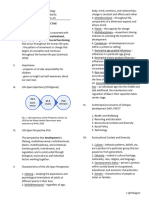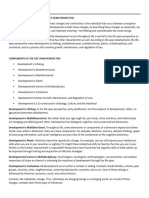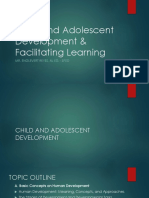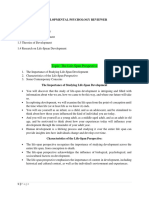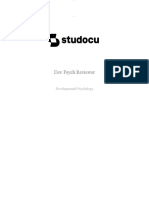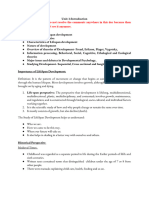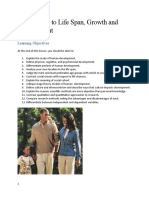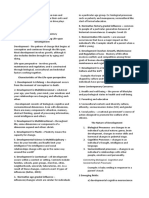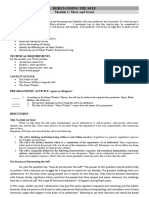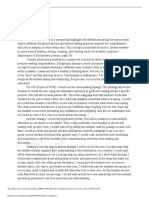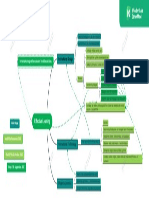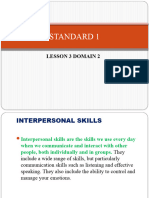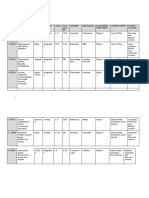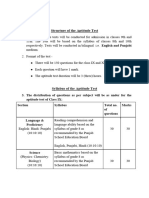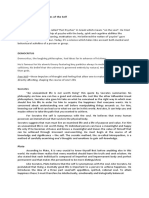0% found this document useful (0 votes)
7 views15 pagesLifespan Perspective
The document discusses the life-span perspective of development, emphasizing that development occurs throughout both childhood and adulthood, influenced by biological, cognitive, and socioemotional processes. It outlines various contextual changes affecting development, including normative age-graded influences, normative history-graded influences, and non-normative life events. Additionally, it reviews several theories of development, including psychoanalytic, cognitive, behavioral, and ecological theories, highlighting their significance in understanding human growth and development.
Uploaded by
demisesatoriCopyright
© © All Rights Reserved
We take content rights seriously. If you suspect this is your content, claim it here.
Available Formats
Download as PDF, TXT or read online on Scribd
0% found this document useful (0 votes)
7 views15 pagesLifespan Perspective
The document discusses the life-span perspective of development, emphasizing that development occurs throughout both childhood and adulthood, influenced by biological, cognitive, and socioemotional processes. It outlines various contextual changes affecting development, including normative age-graded influences, normative history-graded influences, and non-normative life events. Additionally, it reviews several theories of development, including psychoanalytic, cognitive, behavioral, and ecological theories, highlighting their significance in understanding human growth and development.
Uploaded by
demisesatoriCopyright
© © All Rights Reserved
We take content rights seriously. If you suspect this is your content, claim it here.
Available Formats
Download as PDF, TXT or read online on Scribd
/ 15


